With a wide variety of options, from mountain hikes to glacial lakes and clifftop trails to hidden tidal bays, South Wales is an ideal location for dipping walking trails.
I'm Nia Knott, a qualified guide with my company Wild Trails Wales. The following dipping walking trails are a selection of those featured in my guidebook. Your safety is paramount and going in a group is much more fun! I’m experienced and certified, so join me on some of my favourite trails for a guided walk with a dip.
Nash Point and Monknash, Glamorgan Heritage Coast
I’m very fortunate to live on the Glamorgan Heritage Coast and so I spend much time on wild swimming walks here; blessed as it is with huge tidal beaches and miles of coast path and traditional countryside trails.
One of my favourite walks begins at Nash Point lighthouse. A wonderful place to play in the waves at low tide, this is not, however, a good swimming option at high tide due to the uneven erosion of the rock bed. From the bay, the trail turns inland through a secluded wooded valley, then through fields and down a quiet country lane before turning back towards the coast, passing crumbling ruins associated with a monastic grange of the early medieval period. The trail through another valley leading to the sea is to be savoured, with trees forming an enclosed passageway, until you emerge to the sound of the waves. The water here is similar to that at Nash Point, best enjoyed at low tide, with the scale of the cliffs and the beach revealed by the outgoing tide.
What I love about this place is that it never gets too crowded. Even the coast path is quiet. Peregrine falcon and choughs nest in the cliffs. Curlew and oystercatchers wade along the shoreline. Follow the coast path back to Nash Point with views over the channel to Devon and the two lighthouses acting as a return beacon.
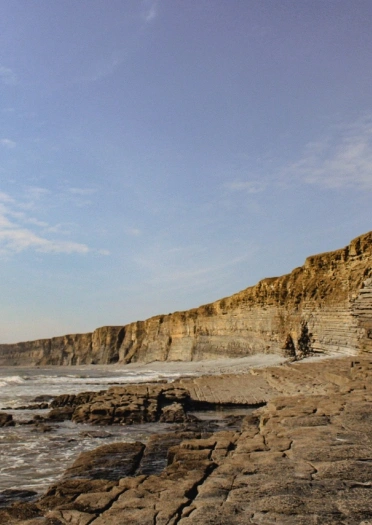
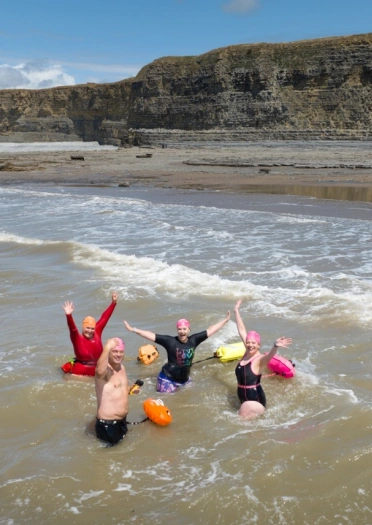
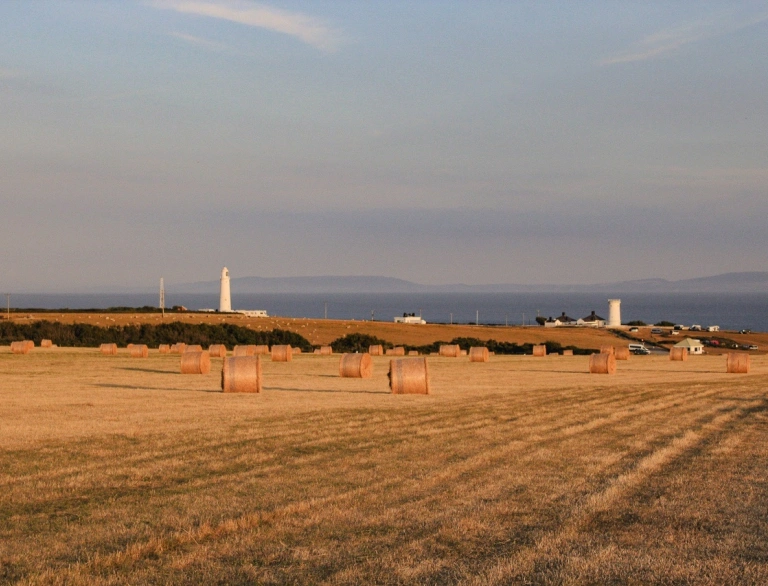
Llyn y Fan Fawr, Bannau Brycheiniog (Brecon Beacons)
The quieter, western reach of the Bannau Brycheiniog National Park is my go-to place when I want space to breathe. As you set off from the tiny lane that winds its way through this popular mountain valley, the peaks of Mynydd Du loom in the distance.
The vast moorland stretches out ahead of you, promising a wild mountain swimming adventure. Follow a series of tumbling cascades; wonderful for a dip on a warm summer’s day, all the way up to Llyn y Fan Fawr. With a gentle sloping entry, the lake stays shallow for some distance, so you have to go some way to get out of your depth. It can be exposed up here so I always pack plenty of warm clothes and get changed quickly after a dip. The trail is often indistinct on the boggy ground, so navigation skills are important. The route returns downhill from the lake alongside another set of cascades, to the prehistoric stone circle Cerrig Duon with standing stone Maen Mawr, before returning to the start.
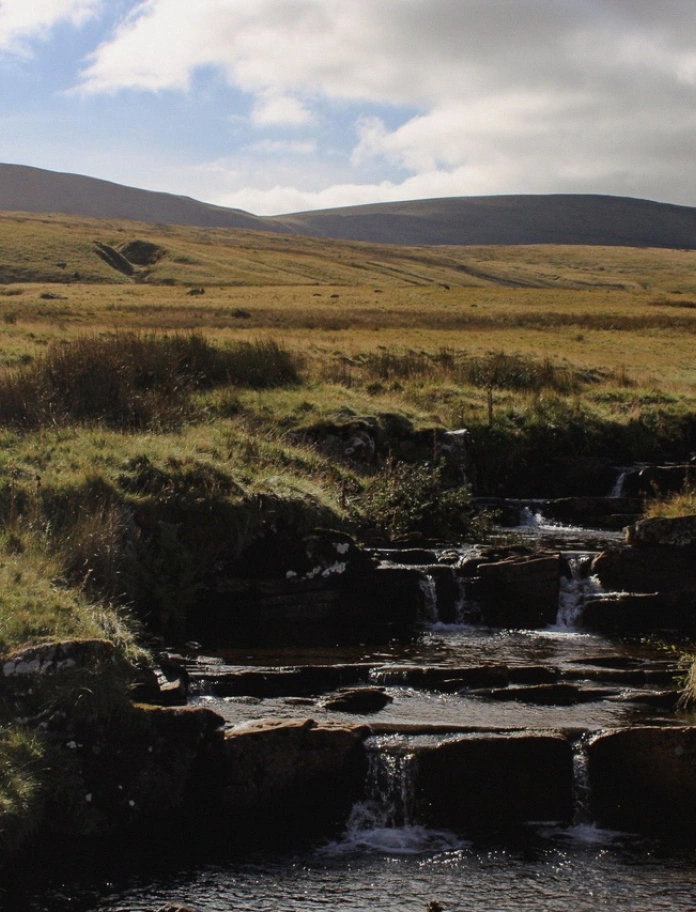
Llangynidr, Usk Valley
The village of Llangynidr sits in the ‘gap’ between the Black Mountains to the north, and the Central Beacons to the west, at the base of the Mynydd Llangatwg and Mynydd Llangynidr moorland plateaus. The Usk river carves through the valley, after its journey east from Brecon and, beyond, from its source at the base of Mynydd Du.
My route here begins at the car park / bus stop on the Talybont – Crickhowell road. The canal path offers a serene stroll, but definitely no swimming! The route descends through fields to the river, and alongside its banks, to a breathtakingly beautiful pool below a waterfall. I could easily while away an hour or two here, swimming, drying off on the rocks, having a lazy picnic and birdwatching. Continuing along the riverside trail there are further places for a dip in the river before the walk circles back into the village.
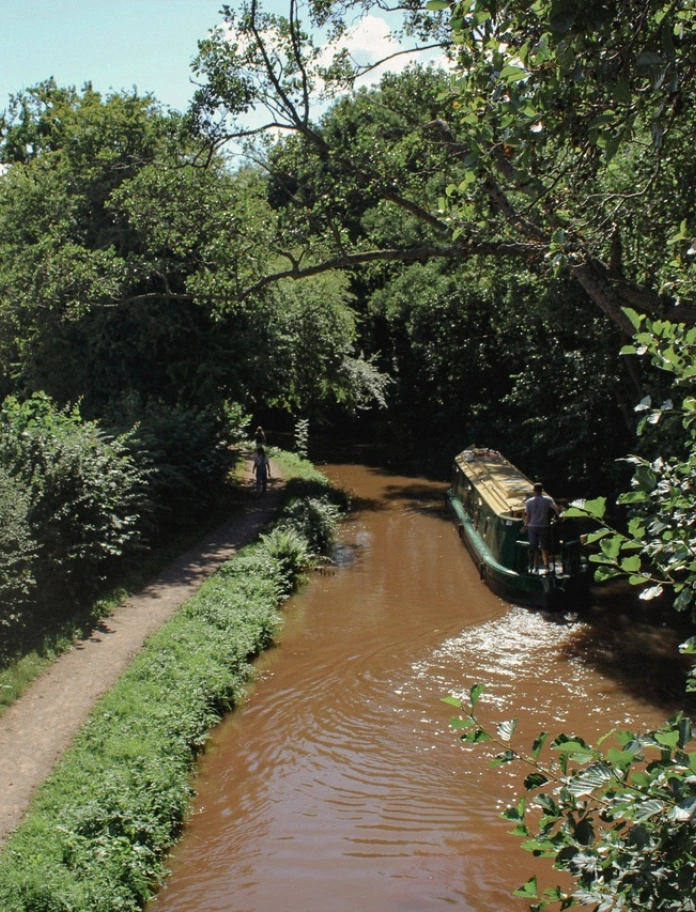
Penallt, Wye Valley
The Wye Valley is often referred to as the birthplace of British scenic tourism thanks to its ‘picturesque’ qualities. It offers some fantastic paddle points along its 130 mile length, though the lower Wye Valley Area of Outstanding Natural Beauty is my favourite place for a wild walk and a dip.
The walk gets off to an exciting start, crossing a large iron viaduct built in 1876. A steep walk uphill takes you to Penallt Old Church with a traditional lych-gate and avenue of lime trees. Descend to the river on a track through the woodland.

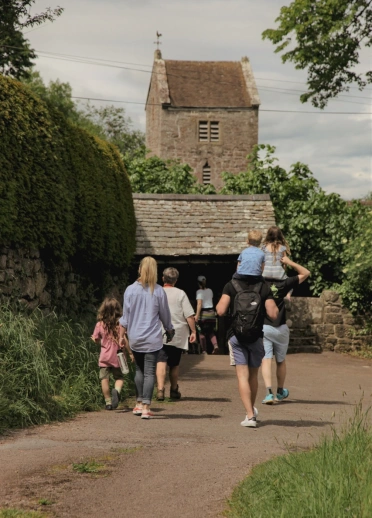
This is a really great trail for families; I took three generations of my family, aged from 4 years old to 64 along on this walk, with only minor protests about the steep hill at the beginning.
Pen Pych, Rhondda
I am fascinated with the South Wales Valleys. Not only for their crucial role in Wales’ modern industrial history, but for the way that nature is reclaiming the landscapes that were once home to immense industrial settlements, coal mines and iron works.
My wild dip and walk at Pen Pych, at the head of the Rhondda Valley, explores the wilder side of the valleys; waterfalls tumbling over rocky escarpments and forested hillsides. From Blaencwm, the trail climbs steeply following the Nant y Gwair, to a small weir-dammed pool surrounded by woodland. A further climb takes you to the summit of Pen Pych for phenomenal views over Blaenrhondda and Treorchy. Continue to the Nant Melyn waterfall, which flows downhill towards a dammed pond sat neatly in the top of the valley. The water here is clean and fresh but remarkably cold, so appropriate clothing is necessary. Frogs and heron both frequent the place. In late summer, bilberries carpet the hillsides.
Following the valley around above the deserted levels, once home to the Blaenrhondda and Fernhill collieries, I usually return to the village with tell-tale purple stained fingers and a box full of berries for the freezer.
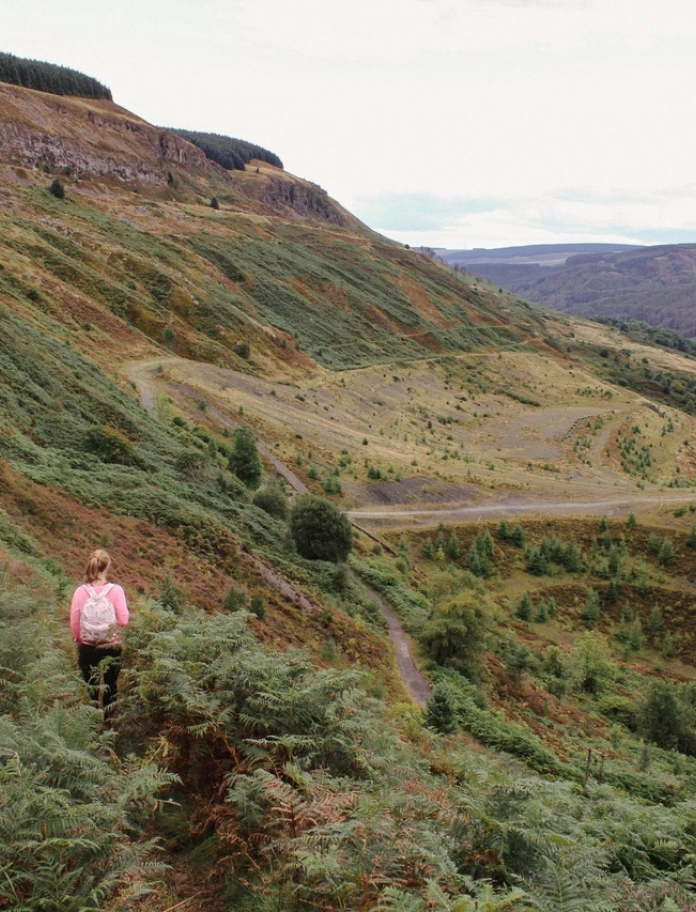
South West Wales
There are so many great wild walks with a dip options beyond - the Gower Peninsula, an Area of Outstanding Natural Beauty with sparkling blue seas and a fascinating history of prehistoric ritual burials, shipwrecks and pirates. I love the trail around the Oxwich headland because of the variety of habitats and landscapes that you pass through.
My five-mile walk begins at Oxwich Bay. The tranquil water ripples green, reflecting the canopy of the adjacent woodland. Go at high tide, as it becomes muddy and shallow when the tide is out. Follow a trail past the church in the woods; you’ll be treated to birdsong and wildflowers. Once out of the woodland the trail takes you along craggy coastline to the tidal beach known locally as Slade. A mid to low tide is best here and I love to play in the foamy waves, taking care of any submerged rocks and being mindful of the route back off the beach as the tide comes in. From here the route climbs inland through fields and past the magnificent Castell Oxwich (Oxwich Castle) before returning to Oxwich Bay.
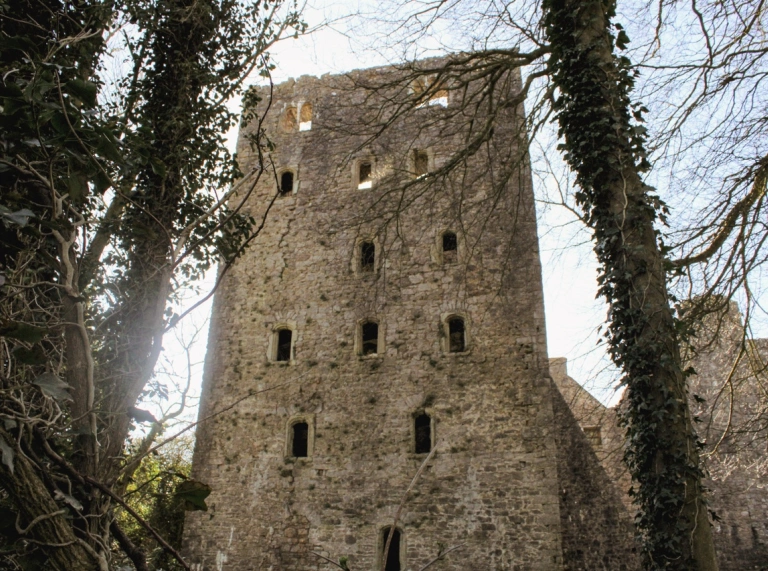
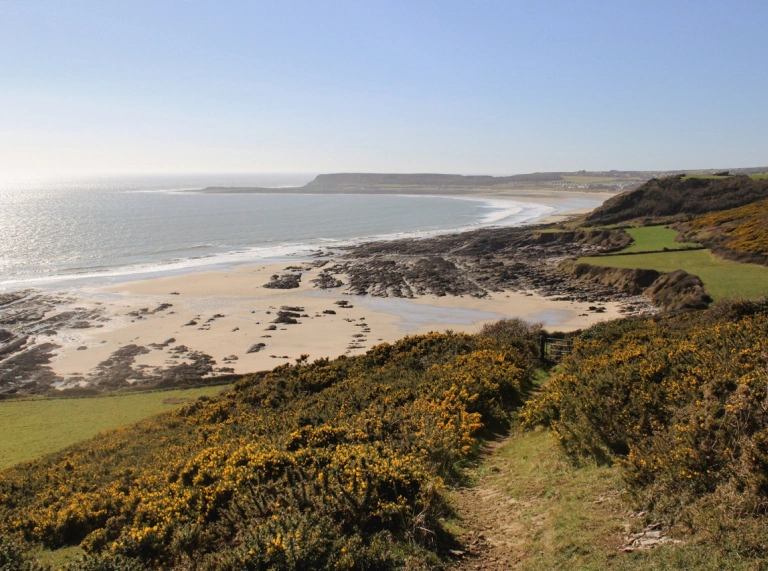
Be safe!
Swimming and walking, especially in unmanaged, dynamic areas, could pose risks. Not all of the locations featured here have lifeguards and all are prone to water and weather hazards.
- Always exercise your own judgement before swimming.
- Stay within your limits and never jump straight into water as this can cause cold water shock, or injury due to shallow depth or hidden hazards.
- Pack warm clothes, sturdy footwear.
- Let somebody know where you’re going and when you plan to return.
Visit Adventure Smart UK for further guidance and always follow the Wild Swimming Code.





